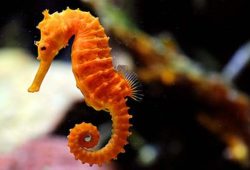Tahiti Butterflyfish for Aiptasia Control
In the article I’ll tell you about Tahiti Butterflyfish for Aiptasia Control.

Contents
One of the Saltwater Aquarium Fishes for Biological of Pest Anemones
The Tahiti butterflyfish (Chaetodon trichrous) is a fantastic fish for the tropical saltwater aquarium. Belonging to the genus Chaetodon, the largest genus of butterflyfishes, the Tahiti butterflyfish is a very close relative of the better known Klein’s butterflyfish (Chaetodon kleinii). There are many reasons why the Tahiti butterflyfish is popular with marine aquarists, including that it is:
- Hardy
- Readily Eats Pest Glass Anemones (Aiptasia spp.)
- Reef Compatible with Caution
Popular Butterflyfishes from the Genus Chaetodon
Many of the most popular and readily available butterflyfishes in the marine aquarium hobby come from the genus Chaetodon. The threadfin butterflyfish (C. auriga), the aforementioned Klein’s butterflyfish, and the raccoon butterflyfishes (especially C. lunula, but also, to a lesser extent, C. fasciatus) are all from the genus Chaetodon, and all are good choices for the marine aquarist looking for a relatively hardy saltwater aquarium fish. One major difference between these better known butterflyfishes and the Tahiti butterflyfish is that the Tahiti butterflyfish is considered reef compatible with caution.
The Tahiti butterflyfish grows to about 12 cm and can commonly be found around patch reefs in lagoons in the eastern Pacific (especially the Marquesas Isalands, the Society Islands, Tahiti, and the Tuamoto Islands). In the wild, this species may be observed swimming singly, in pairs or in small groups up to about six individuals.
Best Choice for Biological Control of Aiptasia
The Tahiti butterflyfish is one of the best animals to consider for biological control of glass anemones (Aiptasia spp.) in a reef tank. Glass anemones are often unintentionally imported to aquaria as hitchhikers on live rock. Given the right conditions, these glass anemones can quickly spread throughout a tank where they may outcompete other sessile invertebrates. The challenge is finding an animal that will eat the pest anemones but leave other desirable ornamental invertebrates alone.
“The Tahiti butterflyfish is reef compatible with caution,” says Mark Martin, director of marine ornamental research at Los Angeles-based Blue Zoo Aquatics. “The consensus is that this fish is a model citizen about 95 percent of the time in a reef tank.” Martin, who has observed thousands of these animals both in the wild and in captivity, recommends the Tahiti butterflyfish to aquarists who have glass anemone infestations in reef tanks.
“While there are other animals to consider for biological control of aiptasia in a reef tank,” says Martin, “this species is one of the best. It is far hardier than known aiptasia-eaters such as the copperband butterflyfish (Chelmon rostratus), and it is at least as unlikely to pick at ornamental corals. Best of all, it eats the aiptasia every time!”
The Tahiti Butterflyfish in the Tropical Saltwater Reef Aquarium
The Tahiti butterflyfish will do best in an aquarium of at least 50 gallons that offers lots of swimming room and which houses other peaceful community fishes. While it will readily feed on pest glass anemones, most individuals will also readily accept a captive diet. This fish should be offered meaty bits of table seafood, along with foods commercially prepared for ominvores and carnivores. It is wise to soak the fish’s food in a vitamin supplement before feeding, as this will assist the animal maintain its color and resistance to diseases and parasitic infestations.
The aquarist planning on housing a Tahiti butterflyfish should add only one individual per tank unless a mated pair can be obtained. In terms of compatibility with other fishes, the Tahiti butterflyfish, once acclimated, can usually hold its own in a community reef tank or fish-only system, even if some semi-aggressive species are added to the aquarium after the Tahiti butterflyfish is established.



